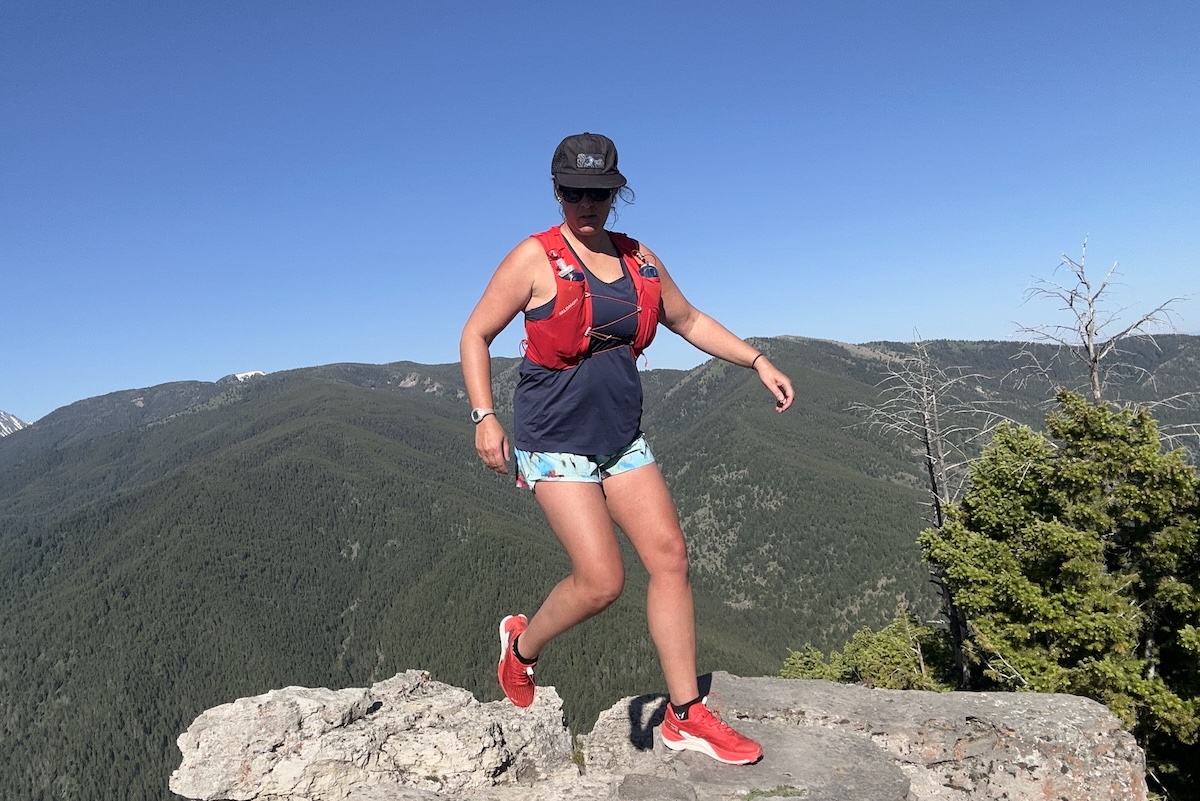
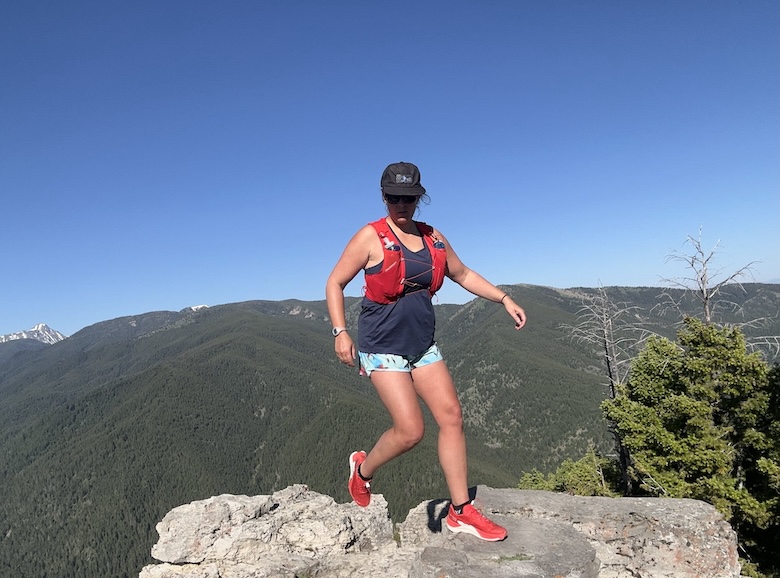
Price: $220
Weight: 1 lb. 1.6 oz.
Cushioning: Moderate / High
Drop: 6mm
What we like: A nimble, performance-oriented unisex trail shoe with a locked-in feel and excellent traction.
What we don’t: More expensive than most trail shoes, and the sizing can be tough to dial in.
See the Salomon S/Lab Pulsar 4
Every so often, a pair of trail running shoes comes along that just makes running fun. This year, it's the Salomon's S/Lab Pulsar 4 for me. These performance-oriented shoes have the most stable, locked-in feel of anything I've tested this season. The lugs are well spaced to avoid debris buildup without losing traction on steep ascents and descents, and the rebound-to-cushion is second to none. I acknowledge that these $220 shoes are at least $50 more than the average trail runner, but they do feel elite. For the right runner, they are worth the money, and you get confidence-inspiring fit, stable support, and excellent energy return. Below I break down my experiences with the Salomon S/Lab Pulsar 4. To see how it stacks up to the competition, check out our article on the best trail running shoes.
The Salomon S/Lab Pulsar 4's nimble fit, paired with secure traction, makes these a joy for running on technical trails. Salomon uses a fairly lean Contagrip rubber layer—stiff enough to provide torque without twisting, but not enough where it starts to absorb energy. The 3.5-millimeter lugs are on the shallower side for a techy trail shoe, plus they're spaced out enough to resist mud accumulation. For comparison, my Brooks Caldera 8 have 4.5-millimeter lugs and the Hoka Speedgoat has 5-millimeter lugs with tighter spacing. I've had issues with the Speedgoat collecting mud during sloppy outings, so there's a compromise between deeper, harder-biting traction and getting clogged. That said, the flexible Pulsar 4 outsole works well on technical terrain, and I haven't noticed any traction issues on steep ascents or descents.
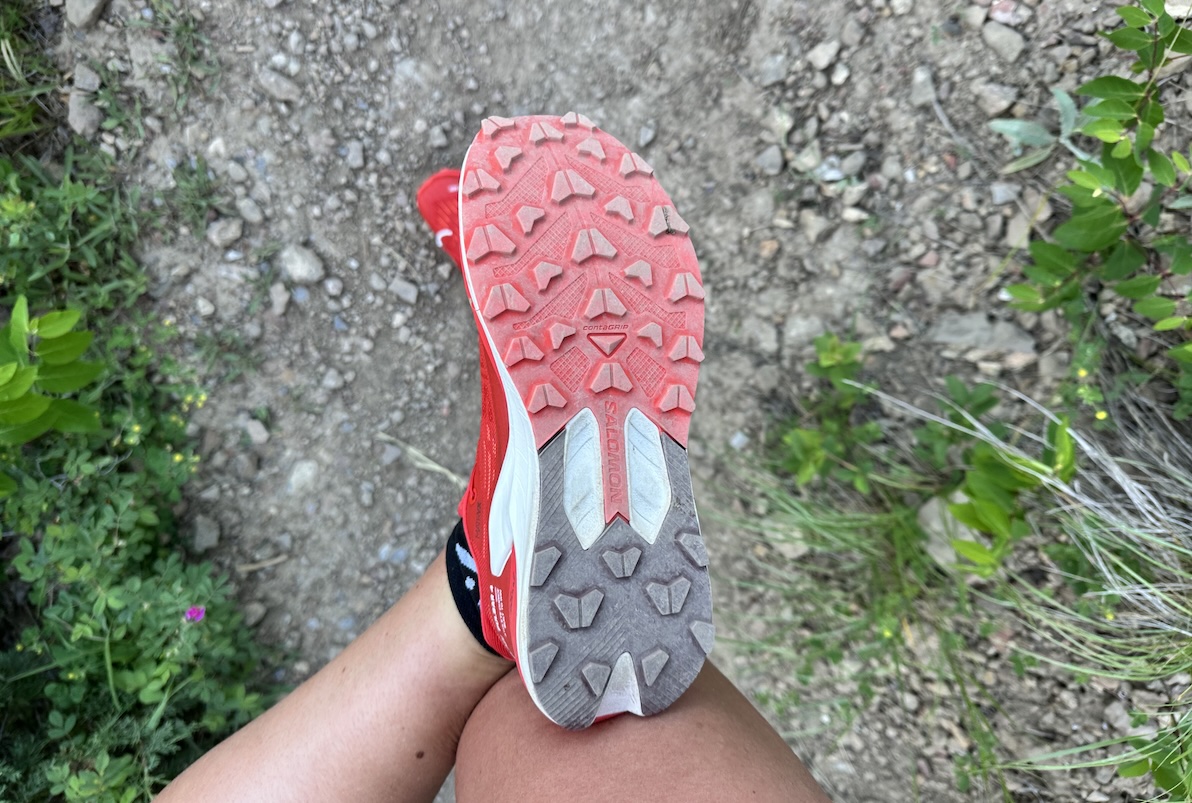
The security of these shoes comes partially from a streamlined fit with less material around the foot. While you lose the plush feel of a padded shoe like the Hoka Challenger or Topo Athletic Mountain Racer, you gain incredible stability on off-camber terrain and more confidence on steep downhills. I test all shoes on the same trail for better comparison (which includes 2,000 feet of descent over two miles), and felt a world of difference between the Pulsar and the less refined Merrell Antora 4, dropping my time by 30% in the Pulsar 4. Additionally, the 6-millimeter drop encourages a forward roll without being dramatic enough to feel unstable. I trust this shoe on pretty much any angle and terrain, and feel more confident opening up my stride than in most other trail running shoes.
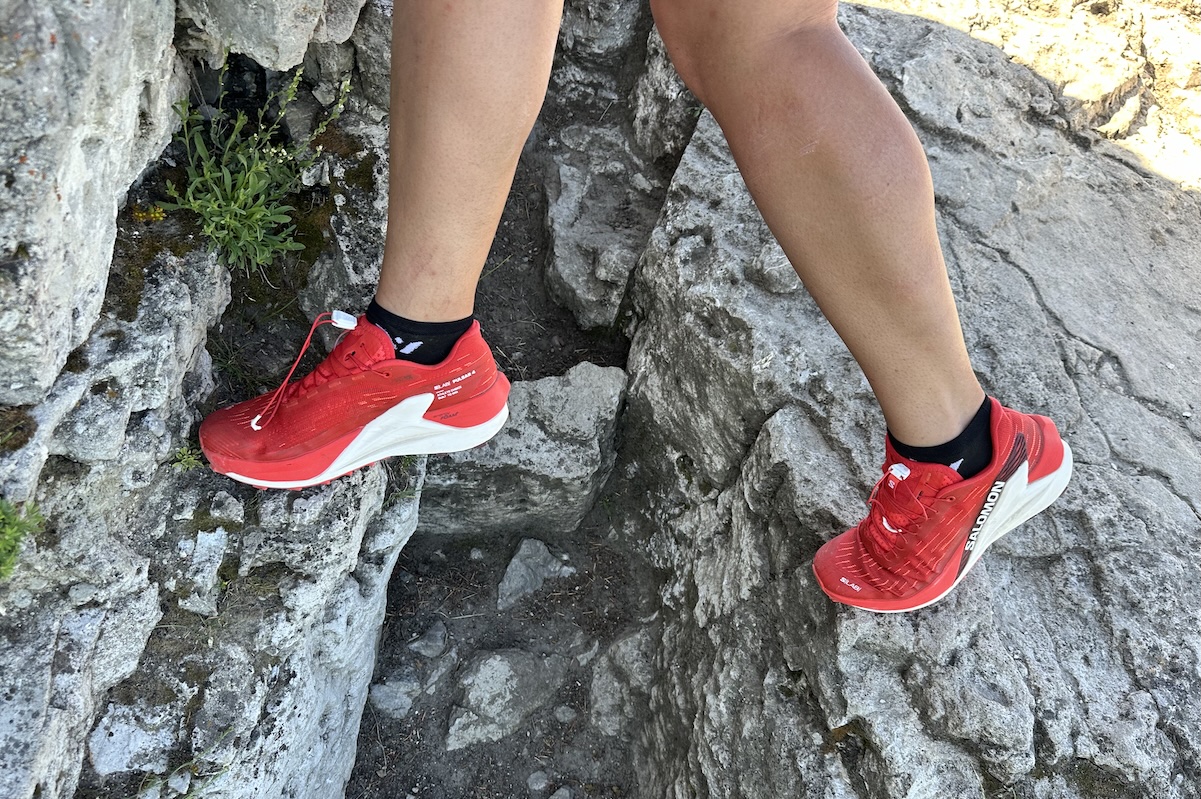
The S/Lab Pulsar 4 doesn't have the widest platform, but it makes up for it with the secure upper wrap and stiff heel counter. The cutouts around the cuff are just deep enough to move comfortably without whacking an ankle bone, and the thinner material lends itself to a tailored fit. The Pulsar has a simple upper free from most overlays, but it does have added lateral reinforcements, which help stabilize on off-camber footing. The shoes are a standard width, which might feel narrow if you're used to a shoe with a wider plant like the Brooks Caldera or any of Altra's trail shoes.
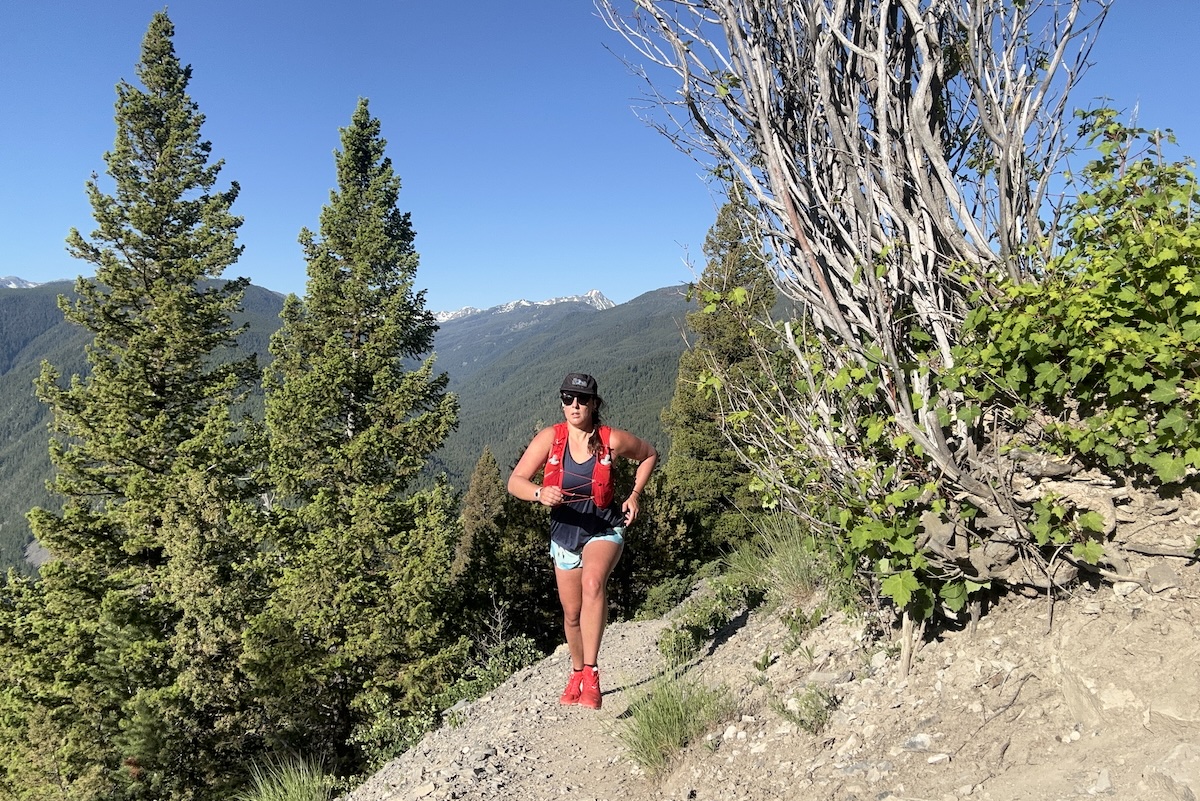
The S/Lab Pulsar 4 has 34 millimeters under the heel and 28 under the toe, and I've found the 6-millimeter drop to be a good middle ground for trail shoes. It eases the pressure on my Achilles during steeper sections but doesn't add force to my already heavy stride. And while 34 millimeters might seem like a lot, it's fairly standard in today's world of max-cushion shoes. The dual-cushion midsole is mapped for the most efficient gait, with a stride-mapped blend of ultralight EVA and an EVA and PEBA mix called optiFOAM+, which Salomon claims has higher energy return. Theoretically, the combination lends itself well to underfoot cushion as well as rebound, so you stay protected from the pounding without losing energy. These shoes do feel incredibly responsive, and are much springier than the somewhat dead-feeling Hoka Challenger 7, which theoretically should have better ground feel due to only having 29 millimeters under the heel (and a similar drop).
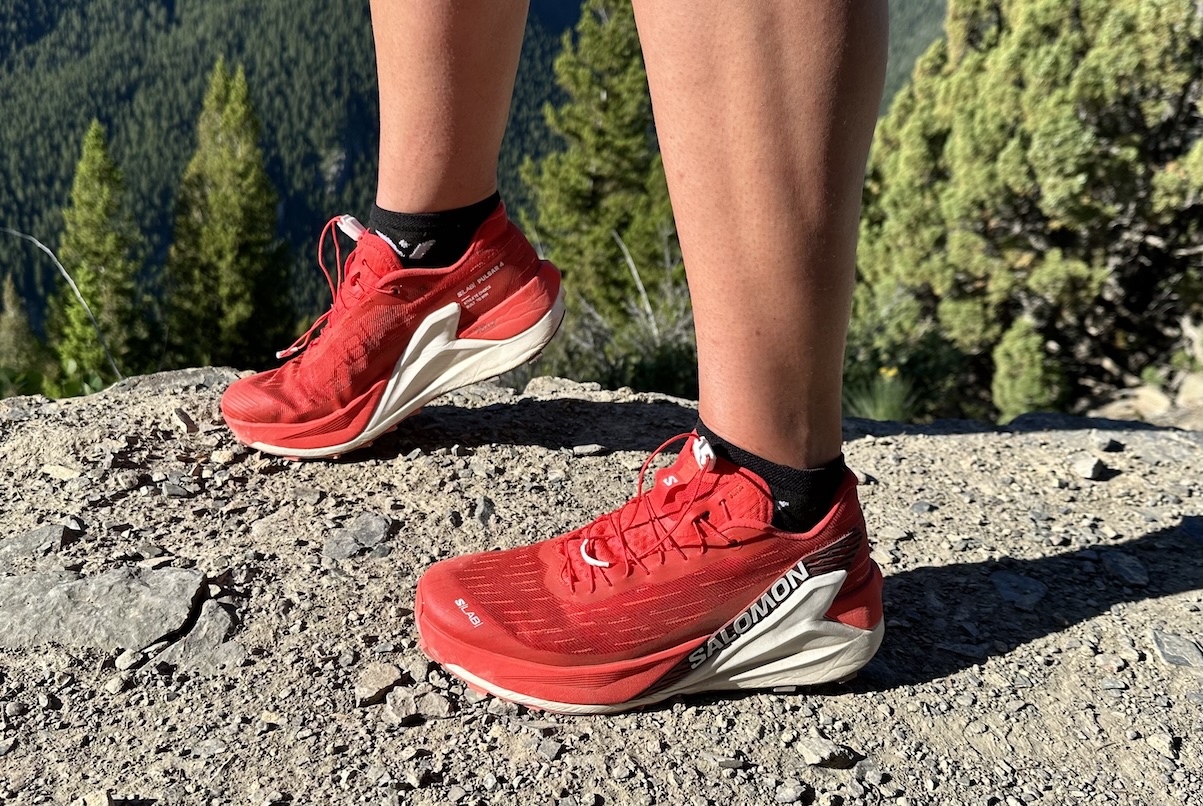
The S/Lab Pulsar 4 is a lightweight performance shoe, so you aren't getting a squishy upper and extra padding around the collar, nor do you have a wide toe box with room to splay. That's not what this shoe is for, so approach the fit and feel of this shoe with these things in mind. That said, the mesh upper translates to one of the more breathable shoes I've worn this year, avoiding moisture buildup and helping draw sweat away on hot runs. Cushion-wise, Salomon hiking shoes have historically felt too stiff for me, but these surprised me with their comfortable feel, and I prefer them over the popular Speedcross, which has a stiffer EnergyCell midsole with a more dramatic 10-millimeter drop. The Pulsar 4 feels much more nimble, plus it's springier with each stride on varying terrain.
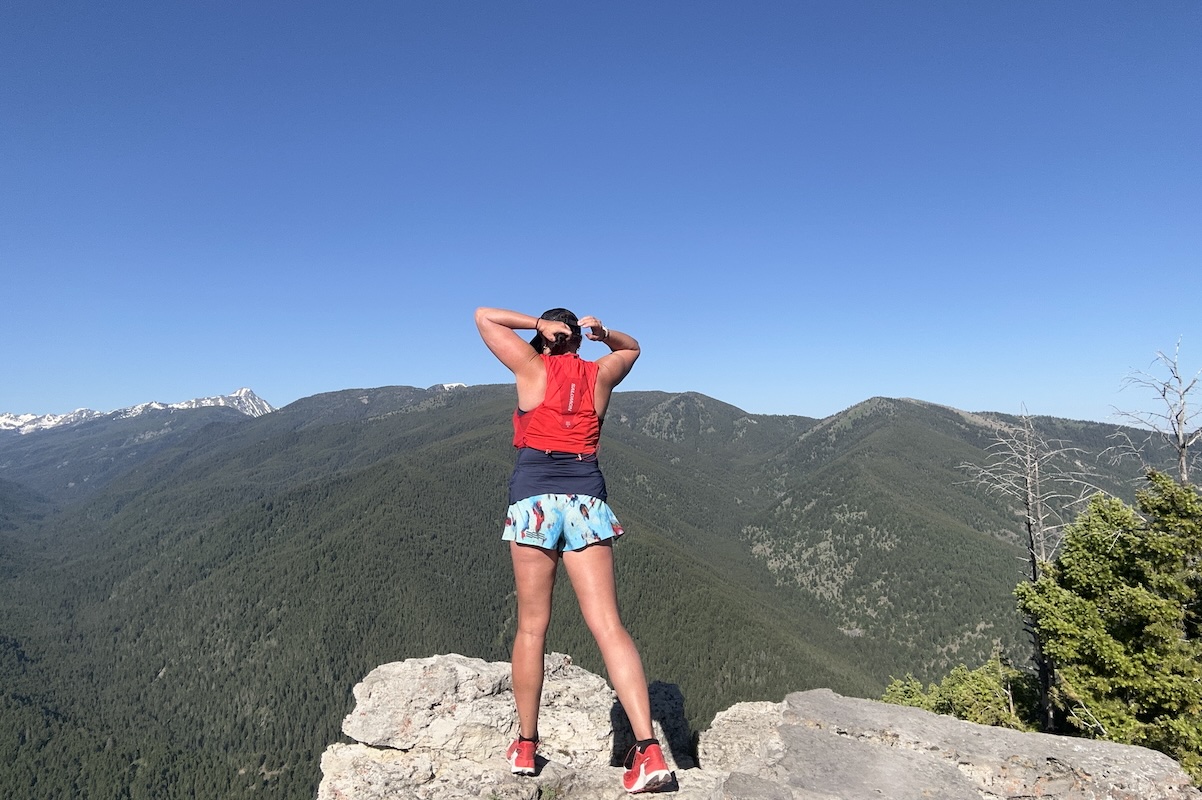
Keep in mind that a shoe like this fits tighter than a recreational hiking or running shoe. Because of that, the Pulsar 4 is my top pick for technical runs where I want the maximum lock through the upper, and I'm willing to sacrifice room in the toe box and under the laces. I did have some fit issues with these shoes (more on that below), and they took work to dial in even after a size exchange, but after lace finagling and sock adjustment, the fit is streamlined and secure. The tongue stays in place, nothing bangs against the top of my foot on steep descents, and my heel never shifts on climbs. They do feel a little tight through the forefoot, but that also might have to do with my personal foot size and shape.
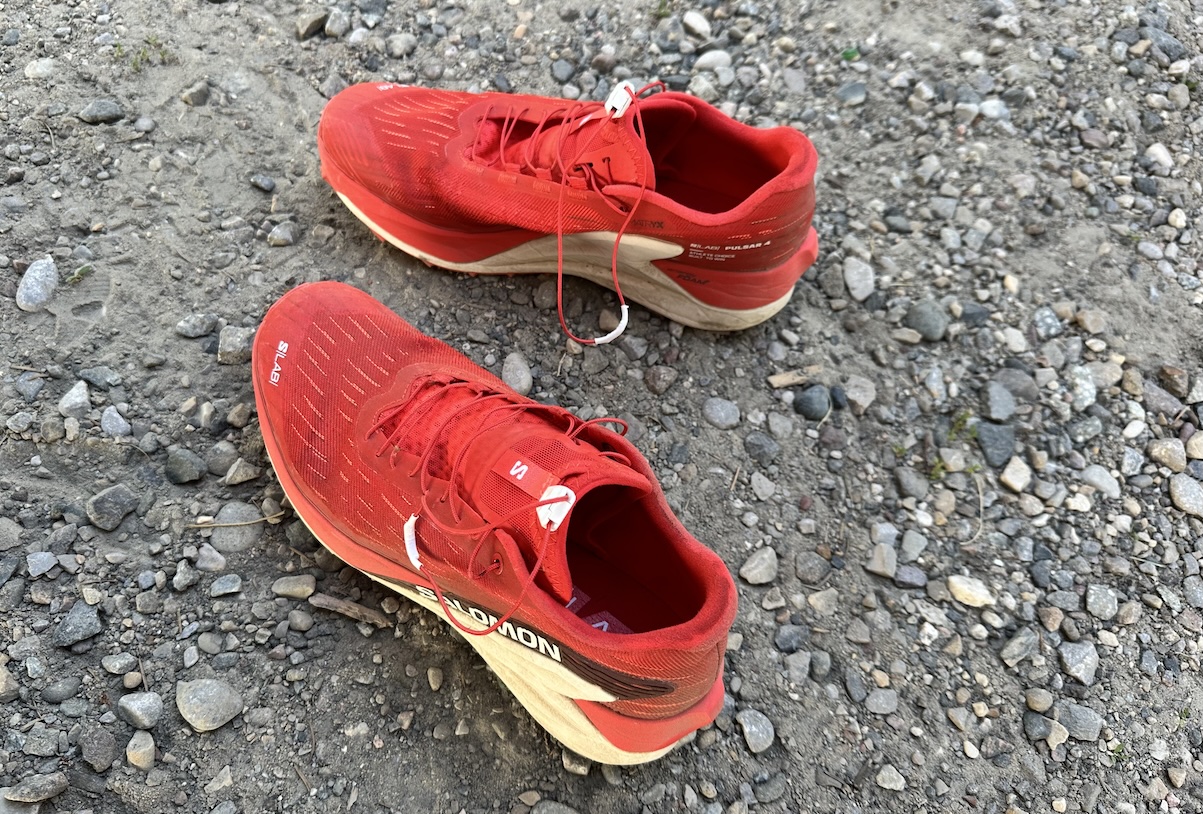
At 1 pound, 1.6 ounces, the Pulsar 4 are quite light for a highly cushioned trail shoe. The simple upper contributes to this, made almost entirely with a durable, breathable Matryx material build that yanks the cost up but enables Salomon to use fewer overlay panels for durability. They aren't the absolute lightest on the market (for example, the women's Hoka Speedgoat 6 checks in at 1 lb. 0.4 oz.) but considering the unisex build, they are lighter than most every other pair of shoes in our trail running shoe guide.
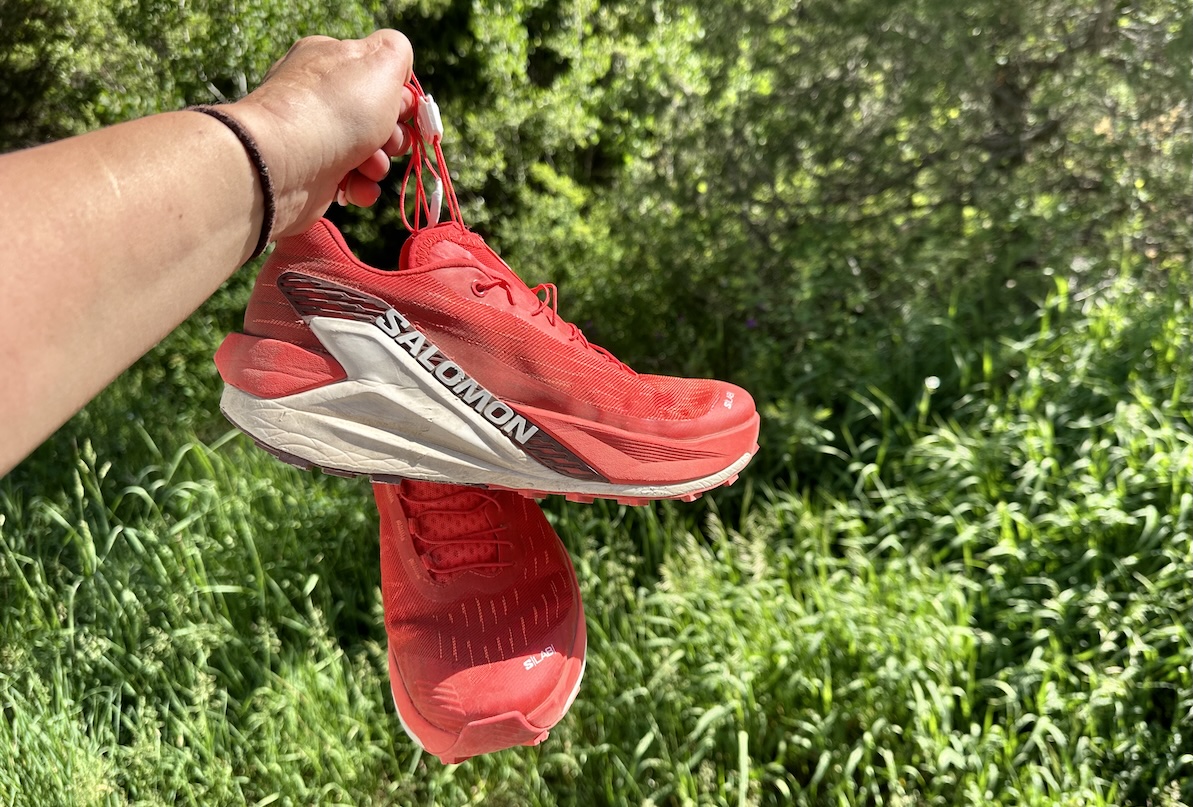
The S/Lab Pulsar 4 have held up very well during my testing so far. I test so many shoes that I often struggle to get durability miles, but the Pulsar's fit and performance means I reach for them more than many other pairs. The Matryx upper shows no sign of wear, the outsole is fresh, and the lugs have stayed sharp despite time spent on jagged trails. Outsole wear has been a thorn in my side for the past few seasons, with the Altra Lone Peak wearing to a smooth platform in less than 200 miles, but so far the rubber and extension through the toe cap on the Pulsar looks good as new.
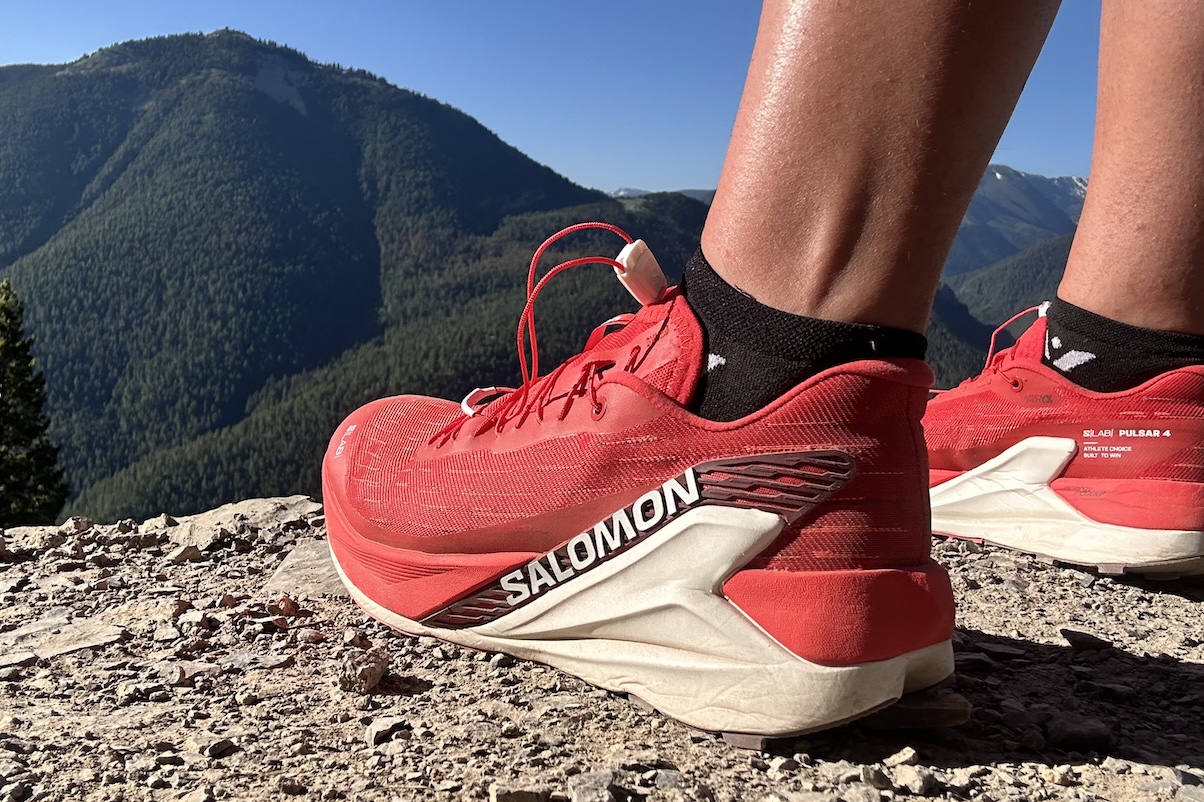
Fit was my biggest challenge with the Salomon S/Lab Pulsar 4. I am a fairly standard women's 8, and while these shoes are built on a unisex last, the purported women's 8 / men's 7 felt nearly a full size too long. The width and wrap was decent, but the toe was so long it would have been hard to get an accurate stability assessment. I ended up exchanging for their listed women's 7.5, which had a more precise fit, though I had to work the lace system to get the width wide enough. I've never been a huge fan of single-pull laces, as I still find I have to work each segment to get even tension. I also swapped out my normal socks for a thinner pair, and the width felt better. One of our other female testers also confirmed that her standard size felt about a half-size too big, so I recommend trying these before you buy.
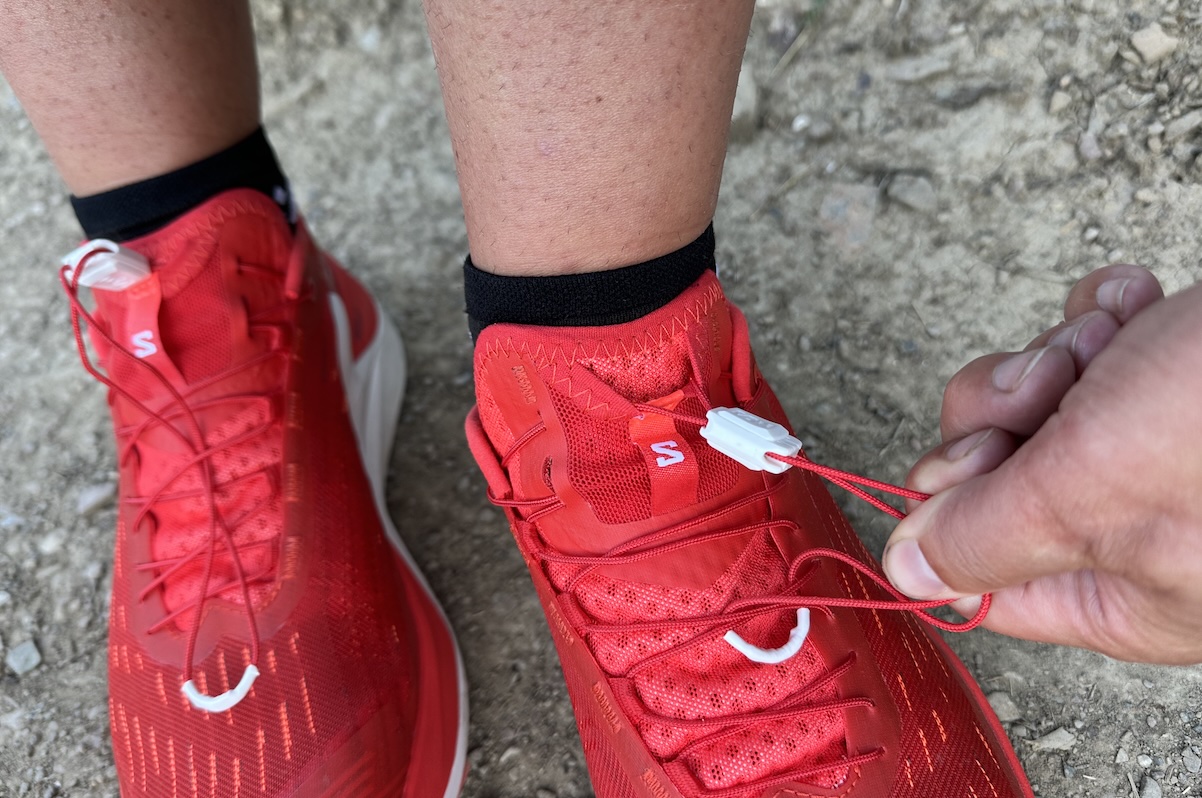
The Pulsar 4 is a unisex shoe, which means there are no women 's-specific lasts (narrower forefoot, lower-volume heel cup). That's fairly unusual in today's shoe market, where most shoe models have both a men's and women's version, or are made for just one or the other. I've realized over a decade of testing that when a brand promotes something as unisex, it usually means a men's fit, and women have to deal with a sized-down version of male-specific proportions. I actually don't believe this is true with these shoes, as the 7.5 fit my low-volume feet well, but it makes me wonder if people with wider feet will feel constricted.
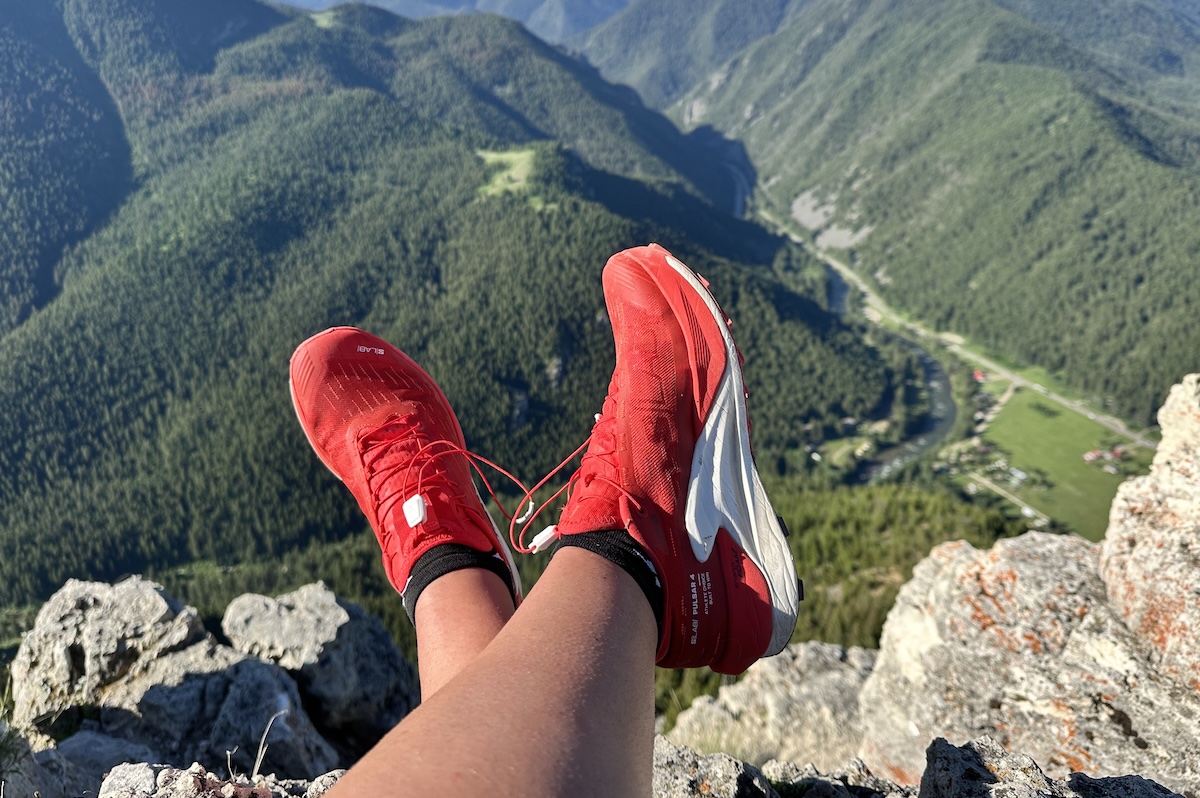
| Shoe | Price | Weight | Stack Height | Drop | Cushion |
|---|---|---|---|---|---|
| Salomon S/Lab Pulsar 4 | $220 | 1 lb. 1.6 oz. | 34mm heel / 28 forefoot | 6mm | Maximum |
| Salomon Speedcross 6 | $145 | 1 lb. 2.5 oz. | 32mm heel / 22 forefoot | 10mm | Moderate |
| Hoka Speedgoat 6 | $155 | 1 lb. 0.4 oz. | 38mm heel / 33 forefoot | 5mm | Maximum |
| Brooks Caldera 8 | $150 | 1 lb. 2.6 oz. | 38.5mm heel / 32.5 forefoot | 6mm | Maximum |
The Salomon S/Lab Pulsar 4 is my choice for technical terrain when I need a stable shoe with excellent rebound and traction. However, I wouldn't call them a casual recreational running shoe, and not just because of the eye-watering price tag. Once you get the fit dialed, they still aren't designed with a lot of extra room. For people looking for a more affordable and casual Salomon trail runner, the Speedcross has long been a Switchback team favorite. Weighing 1.1 ounces more and made with less premium materials than the S/Lab Pulsar, the Speedcross still maintains excellent lateral stability and stellar traction. I've found the midsole to be less forgiving and stiffer than the Pulsar, but for runners looking for a locked-in feel at a reasonable price, it's a great option.
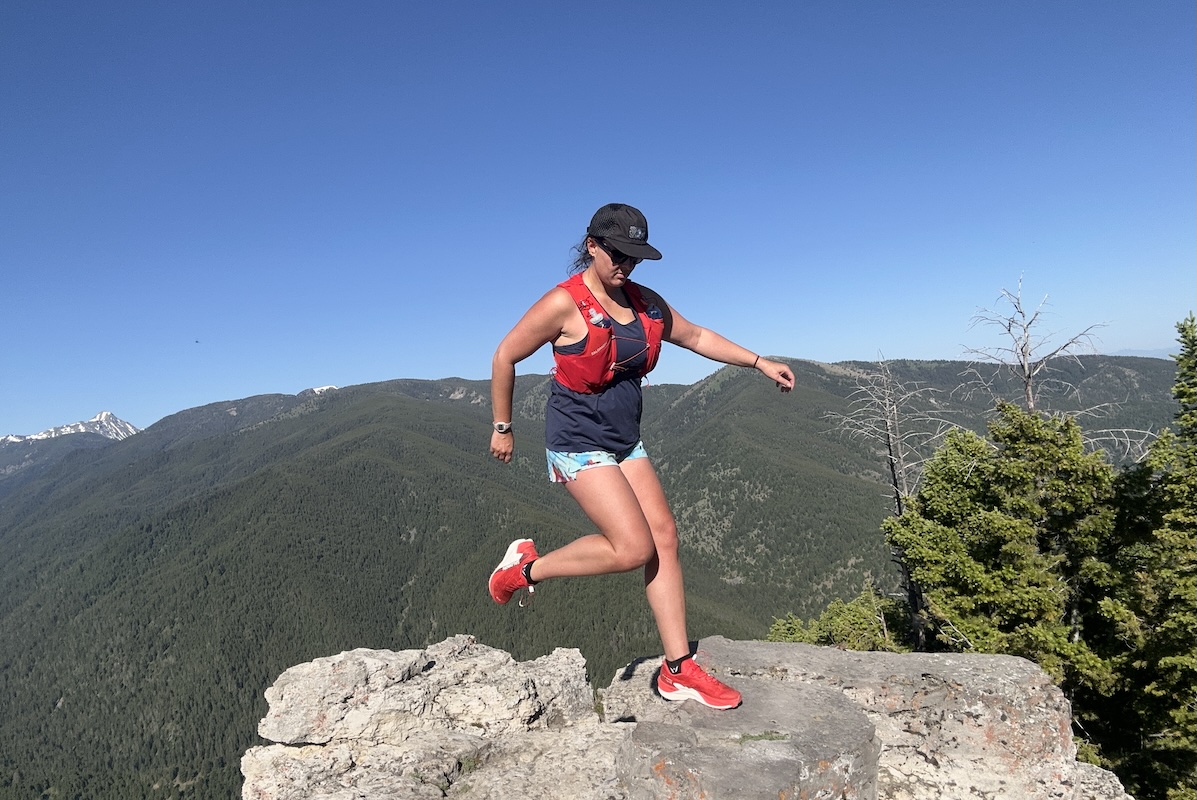
Hoka's legendary Speedgoat is another comparable trail runner. It's a little lighter and narrower, but with a similarly springy feel. The Speedgoat's 5-millimeter lugs are more aggressive than the Pulsar 4, though I have noticed significant mud accumulation on the Speedgoat that I haven't on the Pulsar. Both shoes have comparable underfoot cushion and performance fit, but the taller heel counter and reinforced collar on the Pulsar give it an edge in security. Finally, my squishy fave: the Brooks Caldera 8. These are my shoes for longer, more casual runs. They have a wider toe box that feels comfortable without being sloppy, and a padded tongue and collar that feel positively sock-like. The traction is similar to the Pulsar, though the shoe is heavier and more reinforced, and the overlays paired with the toe cap can feel somewhat overbuilt.
Back to the Salomon S/Lab Pulsar 4 Review See Our Trail Running Shoe Guide